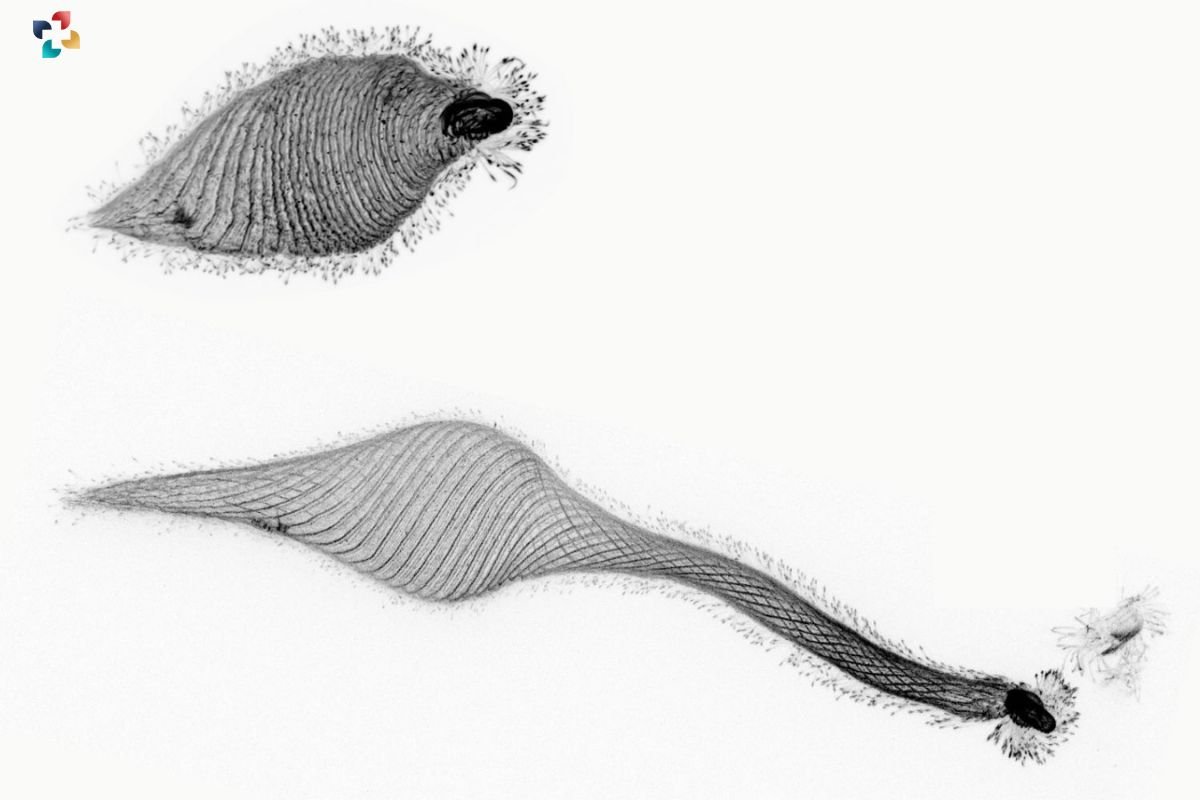Source-Stanford-University
Stanford University researchers have delved into the intriguing world of protists, uncovering a remarkable phenomenon they dub “cellular origami.” Led by Manu Prakash, an associate professor of bioengineering, and his graduate student, Eliott Flaum, the team stumbled upon this discovery while exploring the behavior of a single-cell organism called Lacrymaria olor. Their findings, published in the prestigious journal Science, shed light on the intricate capabilities of these simple cells, which exhibit complex behavior without the presence of a nervous system.
The video footage captured by Prakash showcases the mesmerizing movement of Lacrymaria olor—a teardrop-shaped cell swimming in pond water. In a matter of seconds, the cell extends a long, thin “neck” before retracting it, displaying behavior akin to origami unfolding and folding. Despite lacking a nervous system, the cell demonstrates astonishing morphodynamics, stretching far beyond its original size with precise control.
Unraveling the Geometric Mechanism
The research team’s investigation revealed a novel geometric mechanism underlying Lacrymaria olor’s behavior—a phenomenon previously unseen in biology. Dubbed “cellular origami,” this process involves intricate folding and unfolding at the scale of a single cell. Prakash and Flaum attribute this behavior to the organism’s cytoskeletal structure, consisting of helical microtubules encased in a delicate membrane.
Through advanced microscopy techniques, the researchers identified 15 stiff, helical microtubule ribbons enveloping the cell membrane, forming the framework for origami-like movements. These ribbons coil and uncoil, orchestrating the cell’s projection and retraction with mathematical precision. The study highlights the elegance of nature’s design, with the cell’s architecture dictating its behavior in a consistent and reliable manner.
Recreational Biology and Future Implications
Prakash describes their approach to research as “recreational biology,” characterized by a sense of wonder and playfulness that fuels their curiosity-driven exploration. Their journey into the world of protists serves as a testament to the endless possibilities inherent in scientific inquiry.
Beyond unraveling the mysteries of cellular origami, Prakash envisions practical applications for their findings, including the development of microscale “living machines” with transformative potential in various fields. From space telescopes to miniature surgical robots, these deployable systems could revolutionize technology and healthcare.
As Prakash continues his interdisciplinary pursuits, spanning biology, engineering, and environmental science, his work exemplifies the spirit of exploration and innovation at Stanford University.
In summary, Stanford researchers have unveiled the fascinating world of cellular origami, shedding light on the intricate behaviors of simple organisms like Lacrymaria olor. Their discovery not only expands our understanding of biological mechanisms but also holds promise for future technological advancements.







